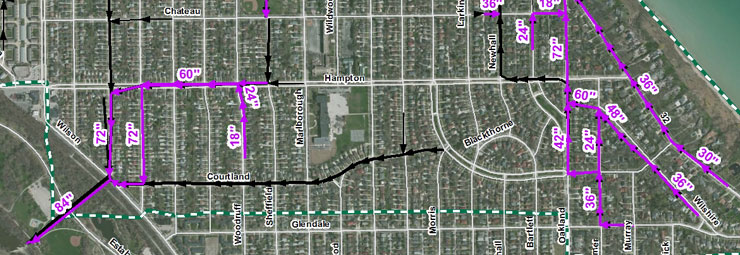
Storm and Sanitary Sewer System Analysis
Client: Village of Whitefish Bay
Location: Whitefish Bay, Wisconsin
The Village of Whitefish Bay is served by separate storm and sanitary sewers. During rainfall events, the sanitary system can become overwhelmed by infiltration and inflow (I/I), overflow into the storm system, and back up into basements. During July 2010, both systems became overloaded and widespread basement and surface flooding occurred. Several blocks were inundated. Donohue identified means of alleviating overloading Whitefish Bay’s sanitary and stormwater collection systems.
Donohue made several presentations at Village Board meetings and at a separate Public Meeting. At this meeting Donohue presented the results of a level of protection analysis. Donohue also surveyed all Village residents to determined their perceptions of where and why flooding occurs. Out of the 4,903 survey questionnaires mailed to the residents, 2,371 residents responded, a remarkable 48% return rate. Over half of these respondents reported basement flooding from sanitary sewer backups. The majority of respondents felt that backups were the result of deficiencies in the storm sewer system; few felt I/I contributed to the problem despite the fact the majority of these homes have gravity foundation drains.
To evaluate flooding, Donohue updated and calibrated the existing sanitary and stormwater XP-SWMM conveyance models to replicate the observed responses. Because of the interconnectedness of the systems, Donohue merged and updated 6 existing storm sewer models with a sanitary sewer model. Donohue added a 2-dimensional module to the model to simulated overland flows and surface flooding.
Donohue worked with the Village to develop a program to reduce I/I from private property and to reduce stormwater flooding to an acceptable level. The project also included an evaluation of various green and low impact development best management practices (BMP) that can be designed to attenuate peak flows. These include subsurface detention, bio-retention basins and swales, and porous pavements.
